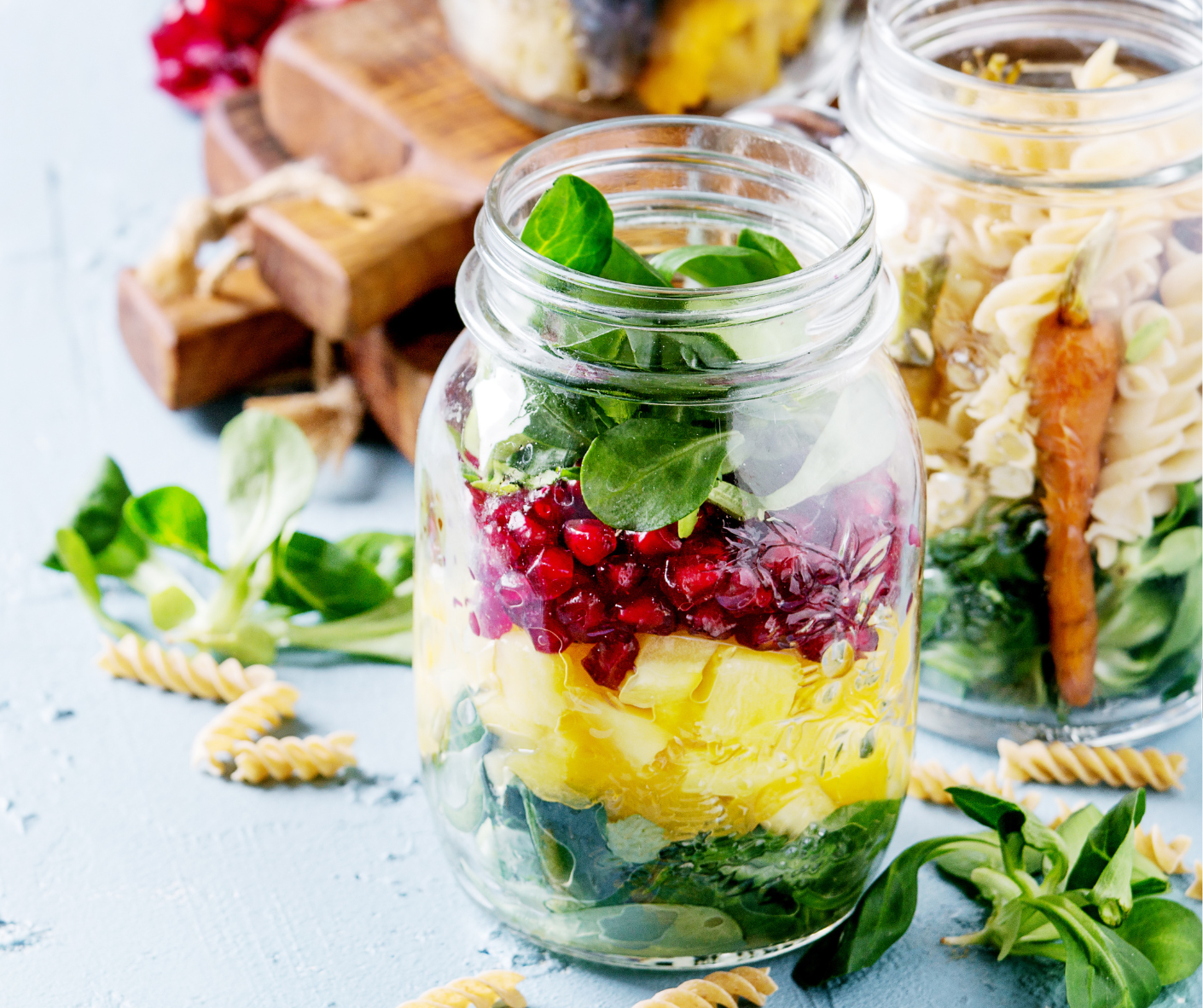Spring Into Wellness: A Fresh & Fun Culinary Experience is an engaging hands-on event that inspires young minds with the joy of fresh, healthy foods, movement, and nature. This interactive workshop guides students through a multi-sensory journey—tasting vibrant greens, creating delicious salad jars, moving outdoors, planting their own herb gardens, and preparing colorful rainbow summer rolls in the kitchen.
Students gain valuable nutrition and culinary skills while cultivating a deeper appreciation for where food comes from and how it nourishes both the body and mind.
Instructor: Toni Julian
A Collaboration between Soul Potential Institute and Rebekah Children’s Services Culinary Academy
Date: April 10, 2025
Time: 10:00 AM – 1:00 PM
Location: RCS Culinary Academy
Students gain valuable nutrition and culinary skills while cultivating a deeper appreciation for where food comes from and how it nourishes both the body and mind.
🌱 Event Agenda
10:00 AM – Welcome & Lettuce Tasting Experience
- Students explore different types of lettuce and greens through a fun sampling session.
- They learn about flavor profiles, textures, and best pairings.
10:15 AM – Build-Your-Own Spring Salad Jars
- Students layer fresh, vibrant ingredients in mason jars for a delicious, take-home meal.
- They learn about balanced nutrition and creative ingredient combinations.
11:00 AM –DIY Herb Planting
- They plant starter herbs in pots (basil, mint, parsley and rosemary) to nurture at home.
11:45 AM – Return to Kitchen for Rainbow Summer Rolls
- A hands-on cooking activity where students roll fresh, colorful summer rolls with a variety of vegetables, herbs, and protein options.
- They create a homemade dipping sauce to pair with their rolls.
12:45 PM – Enjoy & Wrap Up!
- Participants celebrate their delicious creations together.
- Participants take home their Spring Salad Jars and Potted Herbs.
Lettuce Tasting Experience
Varieties: Descriptions, Flavor Profiles & Health Benefits 🥬
🥗 Arugula
- Description: Small, dark green leaves with a delicate, elongated shape.
- Flavor Profile: Peppery and slightly spicy, adds a bold flavor to salads.
- Health Benefits: Packed with antioxidants, supports heart health, and contains compounds that may help detoxify the body.
🥗 Baby Spinach
- Description: Tender, dark green, oval-shaped leaves.
- Flavor Profile: Mild, slightly earthy, and soft in texture.
- Health Benefits: High in iron, folate, and vitamin C, promoting energy production and immune health.
🥗 Butter Lettuce (Bibb or Boston)
- Description: Soft, tender leaves that form loose, round heads.
- Flavor Profile: Mild, slightly sweet, and buttery in texture.
- Health Benefits: High in vitamin A and K, supporting vision, bone health, and immune function.
🥗 Frisée (Curly Endive)
- Description: Light green, curly leaves with a slightly crunchy texture.
- Flavor Profile: Mildly bitter with a slightly peppery note.
- Health Benefits: Supports digestion, is rich in fiber, and contains vitamin A for eye health.
🥗 Iceberg Lettuce
- Description: Crisp, pale green, round heads with tightly packed leaves.
- Flavor Profile: Mild and refreshing with a crunchy texture.
- Health Benefits: Low in calories, hydrating due to high water content, and provides small amounts of fiber and vitamins A & K.
🥗 Kale
- Description: Dark green or purple leaves with a tough, slightly curly texture.
- Flavor Profile: Earthy and slightly bitter, softens when massaged or cooked.
- Health Benefits: High in vitamins A, C, and K, supports immune function, reduces inflammation, and is rich in fiber for digestive health.
🥗 Leafy Greens (Green & Red Leaf Lettuce)
- Description: Loose, frilly leaves that do not form a compact head.
- Flavor Profile: Mild, slightly nutty, and tender.
- Health Benefits: Good source of folate, iron, and vitamin K, supporting red blood cell production and bone health.
🥗 Radicchio
- Description: Small, cabbage-like heads with deep red-purple leaves and white veins.
- Flavor Profile: Bitter and slightly spicy, great for salads or grilling.
- Health Benefits: High in antioxidants, aids digestion, and may help reduce inflammation.
🥗 Romaine Lettuce
- Description: Tall, sturdy leaves with a slightly crunchy texture.
- Flavor Profile: Mildly bitter with a crisp bite.
- Health Benefits: Rich in vitamins A, C, and K, supports heart health and digestion.
How to Build a Perfect Spring Salad Jar
Salad jars are a fun and easy way to enjoy fresh, healthy meals on the go! Follow these simple steps to create a delicious and balanced salad that stays fresh and crisp.
🥗 Step 1: Choose Your Jar Size
- 32 oz (1 quart) – Best for full meal-sized salads.
- 16 oz (1 pint) – Great for side salads or lighter meals.
- Wide-mouth jars – Make layering and mixing easier.
🥗 Step 2: Layer Your Ingredients (From Bottom to Top!)
✅ Dressing (Bottom Layer) – Keeps greens from getting soggy. Use 1-2 tbsp of:
- Olive oil & balsamic vinegar
- Lemon-tahini dressing
- Yogurt-herb dressing
✅ Crunchy Veggies (Next Layer) – Sturdy veggies that won’t absorb dressing too quickly:
- Cherry tomatoes (halved)
- Cucumber slices
- Carrots (shredded or sliced)
- Bell peppers (diced)
✅ Proteins & Grains (Middle Layer) – Add fiber and protein to keep you full:
- Grilled chicken or tofu
- Chickpeas or black beans
- Quinoa, farro, or brown rice
- Hard-boiled egg (sliced)
✅ Leafy Greens (Top Layer) – Keep light greens fresh by placing them last:
- Spinach
- Kale (chopped)
- Arugula
- Romaine lettuce
✅ Toppings (Final Layer) – Add a finishing touch before sealing:
- Feta or goat cheese
- Nuts or seeds (almonds, pumpkin seeds, sunflower seeds)
- Fresh herbs (basil, parsley, mint)
- Dried cranberries or raisins
🥗 Step 3: Shake & Enjoy!
- When ready to eat, shake the jar well to mix ingredients.
- If needed, pour into a bowl and toss for even distribution.
🥗 Bonus Tips:
- Prep ahead! Salad jars stay fresh for up to 5 days when stored properly.
- Use glass jars for better freshness (or BPA-free plastic for easier handling).
- Keep protein separate until ready to eat if storing for multiple days.
Culinary Uses & Health Benefits of Basil, Mint, Parsley, and Rosemary 🌿
🌱 Basil
Culinary Uses:
- Used fresh in salads, sandwiches, and wraps.
- A key ingredient in pesto, marinara sauce, and caprese salads.
- Enhances soups, pasta dishes, and stir-fries.
- Pairs well with tomatoes, garlic, and olive oil.
Health Benefits:
- Rich in antioxidants and anti-inflammatory compounds.
- Supports digestive health and may help reduce bloating.
- Contains compounds that may support heart health.
- Has antimicrobial properties that may help fight infections.
🌿 Mint
Culinary Uses:
- Used fresh in teas, smoothies, and infused water.
- Adds a refreshing flavor to fruit salads and yogurt.
- Enhances sauces, chutneys, and Middle Eastern dishes.
- Complements lamb, chocolate, and citrus flavors.
Health Benefits:
- Aids digestion and helps relieve bloating and nausea.
- Supports respiratory health and may help ease congestion.
- Contains natural cooling properties that can soothe sore throats.
- May help with focus and mental clarity.
🌿 Parsley
Culinary Uses:
- A fresh garnish for soups, salads, and pasta dishes.
- Used in tabbouleh, chimichurri sauce, and Mediterranean recipes.
- Blended into green juices and smoothies.
- Enhances homemade dressings and dips.
Health Benefits:
- High in vitamin C, vitamin K, and folate for immune and bone health.
- Acts as a natural diuretic, supporting kidney function.
- Supports heart health by helping regulate blood pressure.
- Contains compounds that may help detoxify the liver.
🌿 Rosemary
Culinary Uses:
- Adds depth to roasted vegetables, meats, and potatoes.
- Used in herb-infused oils, marinades, and bread recipes.
- Pairs well with garlic, citrus, and root vegetables.
- Used in herbal teas for a warming, aromatic flavor.
Health Benefits:
- Contains antioxidants that support brain health and memory.
- Supports circulation and may help reduce inflammation.
- May help with stress relief and relaxation.
- Has antimicrobial properties that can support immune health.
Planting & Care Instructions for Starter Herbs 🌱
🌿 How to Plant Your Herb Starter
- Prepare the Pot: Use the compostable pot provided and fill it three-quarters full with organic soil.
- Create a Space for the Herb: Gently make a small hole in the center, deep enough to fit the roots of your starter herb.
- Plant the Herb: Carefully place the basil, mint, parsley, or rosemary starter in the hole, making sure the roots are spread out.
- Fill & Press Down: Cover the roots with additional soil, gently pressing down to secure the plant while allowing airflow.
- Watering: Lightly water the soil until damp but not soaked.
🌞 Sunlight & Placement Needs
- Basil & Parsley: Thrive in full sun (6-8 hours daily). Best placed near a sunny window or outside in a bright spot.
- Mint: Prefers partial sun (4-6 hours daily) and does well in both indoor and outdoor settings.
- Rosemary: Requires full sun and benefits from dry, well-drained soil.
💦 Watering Guide
- Basil & Parsley: Water daily or every other day, keeping the soil moist but not soggy.
- Mint: Water every two days, ensuring soil remains slightly damp.
- Rosemary: Water once or twice a week, allowing the soil to dry between waterings.
🌱 Ongoing Care & Harvesting
- Harvest leaves by snipping from the top to encourage bushier growth.
- Avoid overwatering, which can cause root rot, especially in rosemary.
- Trim flowers as they appear to keep the herbs flavorful.
Meal Prep Tips to Make Life Easy
It pays to be extra organized and have several meals available when you need them. Here are some simple meal prep tips to set you up for success.
🌿 Use glass (instead of plastic) containers with lids so you can reheat them as you need without transferring to a micro-wave safe dish. Clear glass also lets you see what’s inside easily.
🌿 Make at least six meals, or as many meals you plan to eat within the next three to four days to ensure freshness.
🌿 Plan to eat the more perishable meals first, like green leafy salads, and save the cruciferous veggies that are longer lasting for later.
🌿 Create variety in your meals by changing out one ingredient. For example: for your salmon, asparagus and brown rice dish, you may want to make four of these, then for the rest use broccoli instead of asparagus. Or, instead of salmon, make the other half of your meals using chicken breast.
🌿 Keep ingredients not intended to be heated in a separate container. For instance, you’ll want to keep your blueberries and grapes in their own container, separate from the chicken and brown rice you will be reheating.
🌿 You may be as basic as you would like, by selecting whole, unprocessed foods and simply assembling to make a fully balanced macro meal. As an example, you could make 8 parfaits in mason jars using Greek yogurt (protein), blueberries (complex carb), flaxseed meal and almonds (healthy fat).
🌿 Make it fun. Meal prep with a partner, a friend or a neighbor and share the rewards.
🌿 Label and date your meals so you will know what’s in them and when you made it in case there’s ever a question. That, and a sniff test, always helps!
From my heart to yours,



